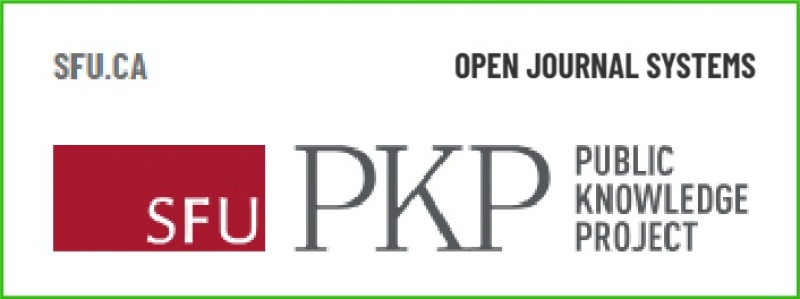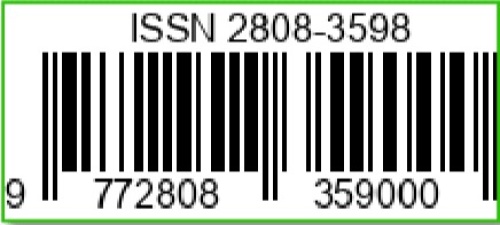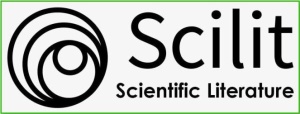Potensi Tabha Lame sebagai Pangan Fungsional Tradisional untuk Mendukung Laktasi: Kajian Etnobotani di Suku Ua Kabupaten Nagekeo
DOI:
https://doi.org/10.36312/biocaster.v5i3.515Keywords:
Ethnobotany, Lactation, Functional Food, Ua Tribe, Tabha LameAbstract
Tabha Lame is a traditional food of the Ua Tribe in Nagekeo Regency which has been traditionally believed to increase breast milk production. However, this belief has never been scientifically studied and systematically documented, especially regarding its nutritional function and ethnobotanical value. This study aims to identify the composition of ingredients, processing, and nutritional potential of Tabha Lame as a locally based functional food. This study was conducted using a qualitative descriptive approach through interviews and field documentation methods with traditional leaders and women who possess traditional knowledge. The results show that Tabha Lame is made from local ingredients, such as: jali (Coix lacryma-jobi), moringa leaves (Moringa oleifera), peanuts (Arachis hypogaea), and coconut milk cooked using the Dhedhu Zaka technique. The content of phytoestrogens, iron, vegetable protein, vitamin A, and unsaturated fatty acids in these ingredients contribute to supporting the lactation process. The slow cooking process maintains micronutrients, while the symbolic presentation demonstrates the integration between nutrition and culture. The conclusion of this study confirms that Tabha Lame is a locally based functional food with potential for development in community-based nutritional interventions for breastfeeding mothers and the preservation of traditional knowledge.
Downloads
References
Adi, A. C. (2016). Ilmu Gizi, Teori, & Aplikasi. Jakarta: EGC.
Adiasih, P. K., & Brahmana, E. M. (2015). Makanan Tradisional sebagai Warisan Budaya Bangsa. Jurnal Ilmu Pengetahuan Sosial, 2(1), 15-28. https://doi.org/10.21831/jipsindo.v2i1.4890
Almatsier, S. (2010). Prinsip Dasar Ilmu Gizi. Jakarta: Gramedia Pustaka Utama.
Anggraheni, D. T. (2014). Peran Makanan Tradisional dalam Mendukung Kesehatan Ibu dan Anak. Jurnal Kesehatan Reproduksi, 5(2), 89-98. https://doi.org/10.22435/kespro.v5i2.3689.89-98
Departemen Ketahanan Pangan Republik Indonesia. (2016). Panduan Identifikasi dan Pengembangan Makanan Tradisional Indonesia. Jakarta: Departemen Ketahanan Pangan Republik Indonesia.
Emilien, C. H., Hsu, W. H., & Hollis, J. H. (2020). The Effect of Soluble Fiber Dextrin on Subjective and Physiological Markers of Appetite: A Randomized Trial. Nutrients, 12(11), 1-11. https://doi.org/10.3390/nu12113341
Handito, D., Saloko, S., Cicilia, S., & Siska, A. I. (2019). Pangan Fungsional. Mataram: Mataram University Press.
Harjanto, S. (2019). Etnobotani Indonesia: Pemanfaatan Tumbuhan dalam Kehidupan Tradisional. Yogyakarta: Gadjah Mada University Press.
Jin, Y., & Fan, M. (2019). Treatment of Gynecomastia with Prednisone: Case Report and Literature Review. The Journal of International Medical Research, 47(5), 2288-2295. https://doi.org/10.1177/0300060519840896
Kementerian Pertanian Republik Indonesia. (2015). Rencana Strategis Kementerian Pertanian 2015-2019. Jakarta: Kementerian Pertanian Republik Indonesia.
Kristina, W. (2020). Efektivitas Kombinasi Sari Buah Naga Merah dengan Virgin Coconut Oil terhadap Kadar Kolesterol Tikus Putih Sprague dawley Dislipidemia. Skripsi. Politeknik Negeri Jember.
Kurniasih, D., Astawan, M., & Wresdiyati, T. (2010). Densitas Gizi dan Sifat Fungsional Asi Eksklusif. Media Gizi dan Keluarga, 34(1), 8-13. https://doi.org/10.25182/mgk.2010.34.1.8-13
Nafilah, N., Jaladri, I., Elfina, M., Ramadhani, F., Manggabarani, S., Purba, J. L. A., Tanuwijaya, R. R., Faiza, E. I., Alam, R. A. C., Sinaga, Y. L. D. Y., Lestari, A., & Desi, D. (2023). Sosial Budaya Gizi. Bandung: CV. Media Sains Indonesia.
Nuraini, S. (2018). Makanan Tradisional dan Identitas Budaya Lokal. Jurnal Antropologi Indonesia, 39(2), 112-125. https://doi.org/10.7454/ai.v39i2.8913
Pawera, L., Khomsan, A., Zuhud, E. A. M., Hunter, D., Ickowitz, A., & Polesny, Z. (2020). Wild Food Plants and Trends in Their Use: From Knowledge and Perceptions to Drivers of Change in West Sumatra, Indonesia. Foods, 9(10), 1-22. https://doi.org/10.3390/foods9101424
Purwanti, S. (2017). Makanan Fungsional Tradisional Indonesia. Malang: UB Press.
Rahardjo, M., & Rostini, T. (2013). Keanekaragaman Hayati dan Pemanfaatannya. Bandung: CV. Alfabeta.
Raslina, H., Dharmawibawa, I. D., & Safnowandi, S. (2018). Diversity of Medicinal Plants in National Park of Rinjani Mountain in Order to Arrange Practical Handout of Phanerogamae Systematics. Bioscientist : Jurnal Ilmiah Biologi, 4(1), 1-6. https://doi.org/10.33394/bioscientist.v4i1.210
Siska, A. I., Rachmani, E. P. N., Widyawati, P. S., Darmakusuma, D., Kamarudin, A. P., Astuti, S. D., Budaraga, I. K., Arafah, E., Julianti, E., Lumbessy, A. S., Febriati, N., Kunarto, B., & Mutis, A. (2024). Teknologi Pengolahan Pangan. Padang: CV. Hei Publishing Indonesia.
Wahyuni, E., Sumiati, S., & Nurliani, N. (2013). Pengaruh Konsumsi Jantung Pisang Batu terhadap Peningkatan Produksi ASI di Wilayah Puskesmas Srikuncoro, Kecamatan Pondok Kelapa, Bengkulu Tengah. Buletin Penelitian Sistem Kesehatan, 16(4), 418-424. https://doi.org/10.22435/bpsk.v16i4.3689
Wang, S., Chen, A., Xie, K., Yang, X., Luo, Z., Chen, J., Liang, G., He, X., Tang, X., & Zhang, D. (2020). Functional Diversity Enhances the Resistance of Ecosystem Multifunctionality to Aridity in Global Drylands. Journal of Applied Ecology, 57(10), 1995-2006. https://doi.org/10.1111/1365-2664.13693
Widodo, A. S. (2018). Pengaruh Konsumsi Makanan Tradisional Berbahan Jali dan Daun Kelor terhadap Produksi ASI pada Ibu Menyusui. Jurnal Gizi dan Dietetik Indonesia, 6(3), 145-152. https://doi.org/10.21927/ijnd.2018.6(3).145-152
Winarno, F. G. (2018). Kimia Pangan dan Gizi. Jakarta: M-Brio Press.
Downloads
Published
How to Cite
Issue
Section
License
Copyright (c) 2025 Veronika P. Sinta Mbia Wae, Anjelina Larici Babo, Maria Fransiska Owa, Yuliana Bupu, Bonefasia Gabriela Noni Ngange, & Maria Prima Owa

This work is licensed under a Creative Commons Attribution-ShareAlike 4.0 International License.
-
Attribution — You must give appropriate credit, provide a link to the license, and indicate if changes were made. You may do so in any reasonable manner, but not in any way that suggests the licensor endorses you or your use.
-
ShareAlike — If you remix, transform, or build upon the material, you must distribute your contributions under the same license as the original.










































